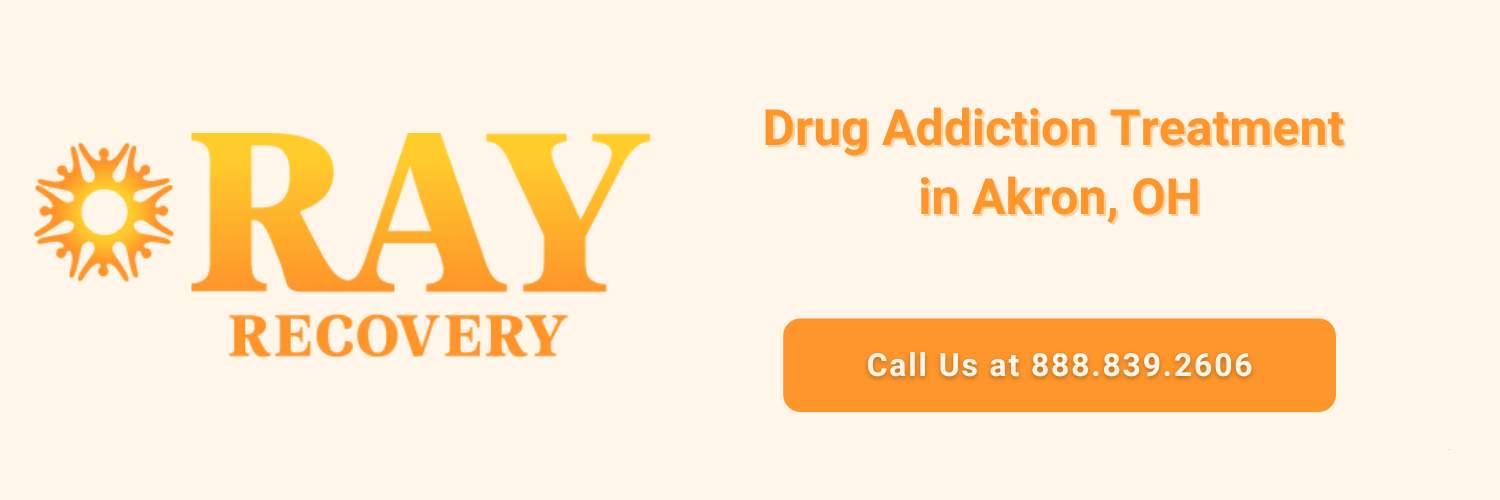Imagine chasing a high so powerful it rewires your brain, alters your choices, and makes seeking an escape a daily routine. For millions caught in the cycle of addictive drugs, this is an unfortunate reality.
Sadly, addiction doesn’t discriminate. What was once a simple curiosity or a quick fix for a bad mood has become a dependency you cannot live without.
While many substances are extremely powerful, so is the potential for a life in recovery. Learn about the most addictive drugs, their effects, and how outpatient drug rehab services can help you reclaim your life.
What Are the Most Addictive Drugs and What Makes Them Addictive?
Unfortunately, nearly any drug or substance can quickly become an addiction. The likelihood of this happening — the “addiction liability” — depends on many factors, including:
- How the substance is used
- The rate at which the substance crosses the blood-brain barrier
- The time it takes to feel its effects
- The substance’s ability to create tolerance or withdrawal symptoms
If you find yourself suffering from a drug addiction, Ray Recovery offers personalized, outpatient treatment plans to help you achieve recovery. Contact us to learn how we can help.
#1: Heroin
Heroin is a highly addictive opiate drug made from morphine, a principal component of opium. It’s often found as a white or brown powder and a sticky black substance known as “black tar” that can be sniffed/snorted, smoked, or injected. As a depressant, heroin slows down the functions of the brain and nervous system.
Because heroin is a rapidly acting opioid, it’s both psychologically and physically addictive. When using, you might experience:
- Drowsiness
- Respiratory depression
- Constricted pupils
- Nausea
- Warm flushing of the skin
- Dry mouth
- Heavy extremities
The Centers for Disease Control and Prevention (CDC) reports that about 7% of all opioid overdose deaths in 2022 involved heroin. However, from 2021 to 2022, heroin overdose deaths decreased nearly 36% as many heroin users shifted to fentanyl.
#2: Cocaine
Cocaine is a white, crystalline powder that’s typically taken by snorting, quickly delivering dopamine to the brain. While the high is intense, it’s also short-lived. Cocaine is an addictive stimulant and is often mixed with other substances, like starches, flours, or other drugs.
Once ingested, cocaine may create many negative effects, including:
- Restlessness
- Irritability
- Anxiety
- Paranoia
- Dilated pupils
- Insomnia
- Loss of appetite
- Irregular heartbeat
- Ischemic heart conditions
- Convulsions
- Stroke
- And more
Because the tolerance to cocaine builds quickly, it is easy to overdose. Between 2019 and 2022, drug overdoses involving cocaine rose 73.5% from previous years, totaling 27,569 deaths.
#3: Crack Cocaine
A form of cocaine, crack cocaine is the rock form that is smoked to create a high. Although it’s similar to cocaine in many ways, it’s very potent and creates a quick, intense high that lasts less time than cocaine. Because the high is so short-lived (about 10-15 minutes), users often seek it out more frequently and in higher doses to regain their high.
The high from crack cocaine creates feelings of excitement, energy, and happiness, but the crash from the high is the exact opposite. The intense low that follows is often expressed as feelings of sadness, irritability, depression, and paranoia. Many negative side effects and physical effects may follow.
#4: Alcohol
Although a different type of substance than typical drugs, alcohol addiction is far too common. Consider these statistics:
- About 2.5% of the world’s adult population (15-49) experiences alcohol use disorder (about 400 million people).
- In 2020, 10.2% of Americans aged 12+ had an alcohol use disorder (about 29 million people).
- Nearly 1 in 8 college students meets the criteria for alcohol use disorder.
- Alcohol-related deaths account for more than 100,000 deaths in the United States each year.
Alcohol is similar to many other substances as it takes effect by releasing dopamine into the brain. As a “social drug,” it helps relax people and decrease anxiety. However, if alcohol is heavily relied on to release endorphins, usage can quickly become uncontrollable.
#5: Fentanyl
Also known as the synthetic form of heroin, fentanyl has quickly become the leading cause of death in the United States, with 48,422 deaths in 2024. Unfortunately, overdose deaths from fentanyl are largely caused by illegally made fentanyl.
Fentanyl is often mixed with other drugs (heroin, cocaine, and methamphetamine), increasing the risk of overdose. Alone, fentanyl is 50 to 100 times more potent than morphine, making it one of the most dangerous drugs. Just a small amount can quickly become lethal.
#6: Methamphetamine (Meth) and Crystal Meth
Methamphetamine (meth) is a highly addictive stimulant that affects the central nervous system and can be consumed in many ways, contributing to its potency and potential for abuse. Meth typically appears as a white, odorless, crystalline powder and is easily dissolved in liquids.
Meth can be ingested through snorting, swallowing, injecting, or smoking.
Crystal methamphetamine is a more pure form of meth characterized by its crystalline, transparent, glass-like appearance and texture. Although it could be injected or snorted, crystal meth is often smoked. It’s significantly more potent than meth and delivers a quick and intense euphoric high.
Both drugs may cause:
- Increased energy
- Rapid and irregular heartbeat
- Hyperthermia
- Decreased appetite
- Anxiety
- Hallucinations
- Violent behavior
- And more
#7: Barbiturates
These depressant drugs are commonly prescribed by physicians to treat conditions like anxiety or epilepsy, however, they’re also illegally distributed on the street and can be very addictive. Many people use barbiturates to counteract the effects of stimulant drugs like meth and cocaine.
There are three main types of barbiturates:
- Short-acting
- Intermediate-acting
- Long-acting
They easily and negatively interact with other medications and can heighten symptoms like drowsiness, dizziness, confusion, respiratory depression, slurred speech, and more.
#8: Methadone
Methadone is commonly used to help treat heroin addiction, however, it can be highly addictive if used on its own. When methadone is being used to help with heroin withdrawal, it should be done under medical supervision because of its addictive properties.
Although methadone is intended to treat pain and manage withdrawal symptoms, it does present serious side effects, including:
- Chest pain
- Lightheadedness or fainting
- Difficulty breathing
- Hallucinations or confusion
- Increased heartbeat
#9: Amphetamines
Amphetamines are stimulants — such as Adderall — that are typically legally prescribed to treat common disorders like ADD and ADHD. However, when not used properly, they can become addictive and cause many side effects, including:
- Dry mouth
- Constipation
- Dizziness
- Insomnia
- Heart problems
- Trouble speaking
Amphetamines affect the brain’s neurotransmitter systems by releasing dopamine and activating the brain’s reward, pleasure, and motivation systems. This profound effect makes amphetamines highly addictive, especially when used not as intended.
#10: Nicotine
Nicotine is similar to alcohol in that it’s readily available and legal to those at least 21 years old in the United States. Unfortunately, nicotine is heavily used. A 2018 survey found that 55% of individuals 12 and older nationwide had tried cigarettes in their lives.
You might be more susceptible to using nicotine and/or becoming addicted if:
- Your first exposure was during your childhood or teen years
- You have genetic receptors that respond to nicotine
- You grew up with parents who smoked
- You suffer from depression or other mental illnesses

Addictive Drug Effects
All of the above substances — and many more — have varying effects and also differ in how likely they are to lead to substance use disorder. Substance intoxication effects could include:
- Hallucinations
- Changes to thinking and judgment
- Increased or decreased appetite
- Difficulty with coordination
- Mood changes
- And more
As previously mentioned, the likelihood, or “addiction liability” of a substance leading to a use disorder depends on factors including:
- How you take the substance (for example, you might take it by mouth, by injection, or by inhaling).
- The rate at which the substance crosses the blood-brain barrier and triggers the reward pathway in your brain.
- The time it takes to feel the effect of the substance.
- The substance’s ability to create tolerance and/or withdrawal symptoms.
If you or a loved one is struggling with substance use disorder, reach out to Ray Recovery to learn about our various outpatient rehab services and how working with our trusted professionals can help.

The Compassionate Team at Ray Recovery Is Here To Help You Kick Your Addiction
Substance abuse disorder poses serious risks to both physical and mental health. Whether you’re struggling with heroin, cocaine, methamphetamines, alcohol, or anything in between, your brain chemistry can be quickly altered and lead to intense cravings, dependency, and long-term damage.
Ray Recovery offers safe and compassionate rehab programs as a path to recovery. During our outpatient treatment programs, you can expect to receive:
- Medical support
- Counseling
- Behavioral therapy
- Structured activities
- And more
We’ll help you safely detox and rebuild with healthy coping mechanisms, support systems, and resources in place.
Let Ray Recovery help you regain control of your life. Contact us today to learn how we can help.
The content in this blog is not intended to be a substitute for professional medical advice, diagnosis, or treatment. Always seek the advice of your physician or other qualified health provider with any questions you may have regarding a medical condition.



